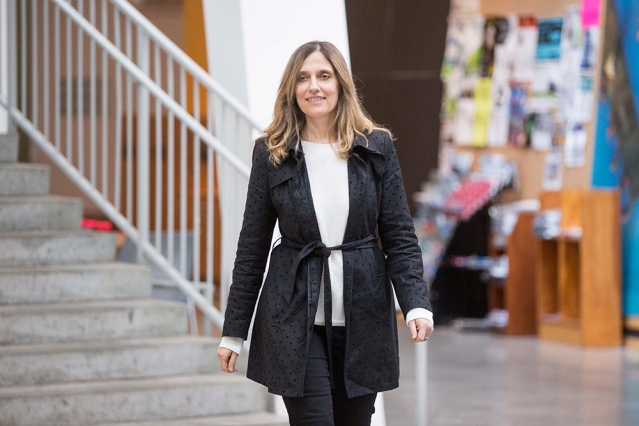Next week CSAIL researchers will be visiting Doha as part of the lab’s collaboration with Qatar Computing Research Institute (QCRI), an esteemed research institute that’s part of Hamad Bin Khalifa University.
Taking place the week of March 26, the meeting focuses on recent work and future areas of exploration between the two institutions, who have been conducting computer science research together for more than five years.
“Our collaboration with QCRI has been very rewarding for our laboratory in a rich myriad of ways,” says CSAIL Director Daniela Rus. “We have done a wide range of projects together that have already had a major impact in the field of computer science.”
One keynote speaker at the event will be CSAIL’s Regina Barzilay (pictured above), a recent MacArthur “genius” who develops artificial intelligence systems aimed at better detecting cancer.
Barzilay will discuss how machine learning models have been used to read imaging data, analyze patient records, and monitor how diseases progress over time.
“I am looking forward to an intriguing and thought-provoking talk,” says QCRI Executive Director Ahmed Elmagarmid. Barzilay will be speaking Tuesday, March 27 at 4 p.m at the Education City Student Center.
The QCRI-CSAIL Computer Science Research Program has focused on a diverse range of topics, from database management and speech processing to shared computing and data analytics:
- Pic2Recipe, an AI that can look at a photo of a dish and be able to suggest similar recipes
- A project focused on developing accurate map-making techniques via crowd-sourcing
- Data Civilizer, a system for easier data-filtering that finds and linking information scattered across digital files
- Interactive Dynamic Video, a new technique that lets you reach in and “touch” objects in videos using a normal camera
- Better speech and language processing technologies, particularly for addressing low-resource issues related to the Arabic language
- A paper in which researchers showed that they had been able to expose a vulnerability in Tor, the anonymity-minded network of roughly 2.5 million users
- 2D-to-3D, a system that automatically converts 2-D video of sporting events into 3-D content that can be played back over any 3-D device
